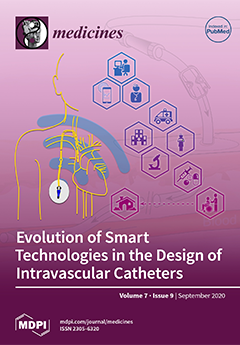Background: Granuloma annulare (GA) is a cutaneous granulomatous disorder of unknown etiology. There are conflicting data on the association between GA and multiple systemic conditions. As a result, we aimed to clarify the reported associations between GA and systemic conditions.
Methods: A retrospective, cross-sectional, case-control study was performed in which the medical records of biopsy-confirmed GA patients ≥18 years of age, who presented to the Johns Hopkins Hospital System between 1 January 2009 and 1 June 2019, were reviewed. GA patients were compared to controls matched for age, race, and sex.
Results: After adjusting for confounders, GA patients (
n = 82) had higher odds of concurrent type II diabetes (odds ratio (OR) = 5.27; 95% confidence interval (CI), 1.73–16.07;
p < 0.01), non-migraine headache (OR = 8.70; 95% CI, 1.61–46.88;
p = 0.01), and a positive smoking history (OR = 1.93; 95% CI, 1.10–3.38;
p = 0.02) compared to controls (
n = 164). Among GA patients, women were more likely to have ophthalmic conditions (
p = 0.04), and men were more likely to have cardiovascular disease (
p < 0.01) and type II diabetes (
p = 0.05). No differences in systemic condition associations were observed among GA subtypes.
Conclusions: Our results support the reported association between GA and type II diabetes. Furthermore, our findings indicate that GA may be associated with cigarette smoking and non-migraine headache disorders.
Full article




